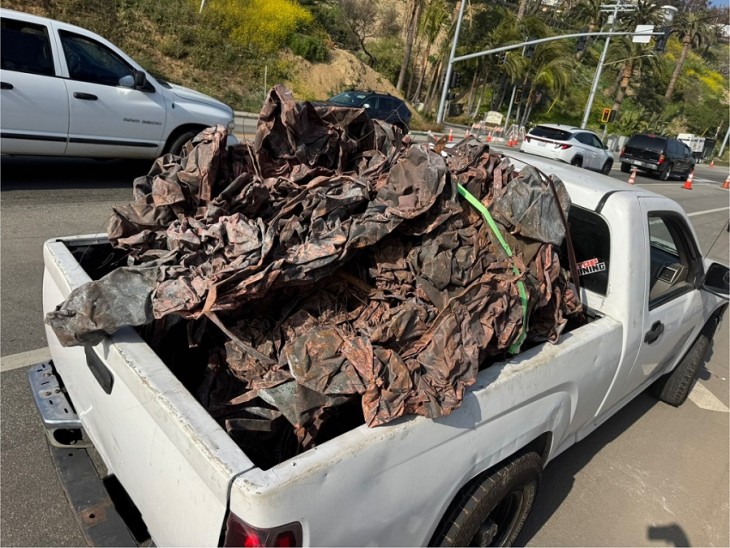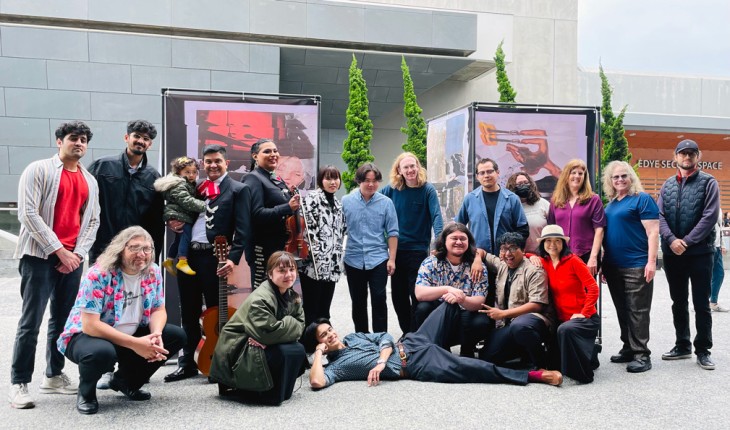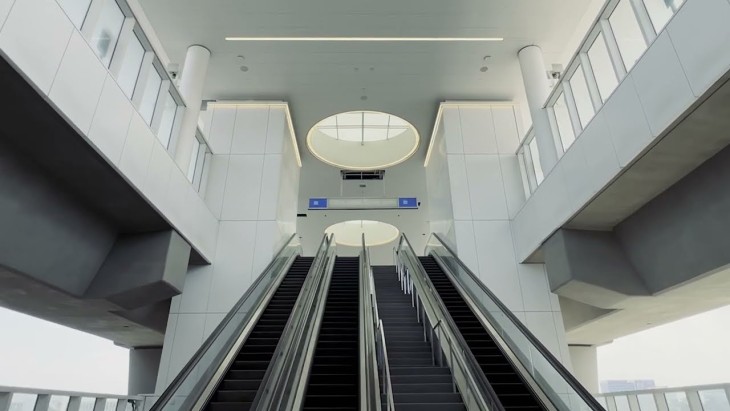Amidst pleas by various camps in favor or against the landing fees at Santa Monica Airport (SMO), David Goddard, chair of the Airport Commission, spent five minutes speaking to the council about the agreements that govern one of the City’s most controversial pieces of real estate.
The council held a special meeting Tuesday evening to discuss a few issues concerning SMO, including an increase in landing fees, noise abatement, and runway pavement.
A little more than an hour into the special meeting, Airport Commissioner Goddard gave his perspective of the airport’s legalities and future in a brief (and general) overview.
As he spoke on behalf of the Airport Commission, Goddard’s presentation was a perspective shared by the other three members of the City-sponsored panel.
Goddard first mentioned SMO was split into three separate parcels: Quitclaim Parcel (west end of the runway); General Aviation Parcel (northeast end of runway); and, Non-Aviation Parcel (southeast end of runway).
Further, Goddard stated there are four laws or agreements directly affecting or governing SMO: the Airport Noise and Capacity Act (ANCA) of 1990; the 1948 Instrument of Transfer; the 1984 SMO Agreement between City Hall and the Federal Aviation Administration (FAA); and, the 1994 Grant Assurances.
ANCA, according to Goddard, “prohibits ‘access limitations’” and punishes airport administrators by withholding federal funds. However, ANCA does not apply to SMO because Santa Monica does not accept FAA funds.
The 1948 Instrument of Transfer, Goddard pointed out, directly applies to the General Aviation Parcel. This document has no expiration date and covers about 3,000 feet of the runway, Goddard stated.
“We have (to assume to) to operate the General Aviation Parcel in perpetuity because that’s what the agreement says,” Goddard told Council members.
Governing the Quitclaim Parcel is the 1984 SMO Agreement and the 1994 Grant Assurances, according to Goddard’s presentation.
The 1984 SMO Agreement expires July 1, 2015. Goddard highlighted three key provisions of that agreement: the City must maintain the full 5,000 feet of runway, aircraft parking, fuel sales, and provide rent space to aircraft companies.
“After July 1, 2015, these obligations expire,” Goddard stated.
Once the 1984 SMO Agreement expires, the 1994 Grant Assurances kick in, Goddard pointed out.
It is here where there is a grey area, as the City believes the 1994 Grant Assurances expire in 2014; the FAA claims it expires in 2023.
“We’re going to take the conservative approach and assume the FAA is correct that the Grant Assurances runs until 2023,” Goddard said.
Goddard also discussed Meigs Field in Chicago, an airport often compared to SMO as both airfields are approximately the same size. Meigs Field was also owned by the City of Chicago; City Hall is making a case it owns at least a portion of SMO.
Meigs Field was shut down by Chicago and eventually converted into a park. However, the airport is symbolic because the City of Chicago was able to shut the airport down and only had to pay back to the federal government its Grant Assurances.
“If Chicago can close down an airport with Grant Assurances, Santa Monica can close 2,000 feet of runway,” Goddard told Council members. “The City (of Santa Monica) would only have to repay $250,000 of Grant Assurance funds.”
Goddard added there are no agreements or laws requiring Santa Monica to rent space to aviation tenants or sell aviation fuel at SMO after July 1, 2015.
Accordingly, Goddard said by closing down 2,000 feet of runway, not renting space to aviation tenants, and the ceasing of aviation fuel sales would result in SMO becoming a “small Class B airport with limited operations.”
According to City staff, SMO sits on 227 acres of land, 187 acres of which is “legally designated and used for aviation activities.”
The City acquired SMO in 1926. The federal government used SMO during World War II.
When the war was over, the federal government transferred the airport back to City Hall via two documents: the 1948 Instrument of Transfer and a Quitclaim Deed.
When City Hall and the federal government were ensnared in a legal battle during the early 1980s, both sides found middle ground in 1984.























